COCKROACH
Cockroaches exhibit a range of complex behaviors that are influenced by their social structures, environmental conditions, and individual personalities. Their behavior can be categorized into several key areas including social interactions, foraging habits, reproductive strategies, and communication methods.
Call Us when you Need Help!
COCKROACH
Cockroaches, belonging to the order Blattodea, are a diverse group of insects that have evolved to thrive in various environments, particularly those associated with human habitation. While approximately 30 species are commonly encountered in urban settings, the broader Blattodea order encompasses thousands of species globally, with the families Blattidae and Blattellidae being particularly notable. Cockroaches are recognized not only for their adaptability and resilience but also for their significance in pest control discussions due to their association with health risks, including the spread of allergens and pathogens.
Taxonomy
Anatomy
Cockroaches belong to the Order Blattodea within the Phylum Arthropoda. This order includes approximately thirty species that are commonly associated with human habitats, although thousands of species exist within the broader group of insects. The most recognized families within this order include Blattidae and Blattellidae, which encompass notable genera such as Blatta and Periplaneta, as well as Blattella and Supella, respectively.
Family Classification
Blattidae
The Blattidae family contains several well-known species, including the American cockroach (Periplaneta americana) and the oriental cockroach (Blatta orientalis). These species are characterized by their size, morphology, and ecological preferences, often thriving in warm environments created by human habitation.
Blattellidae
Blattellidae, on the other hand, is known for smaller cockroach species, most notably the German cockroach (Blattella germanica). This species is notorious for its adaptability and prevalence in residential settings, making it a primary pest in many regions.
Evolutionary Relationships
The evolutionary relationships within the Blattodea, particularly between cockroaches and termites, are complex and have been studied extensively. A cladogram illustrating these relationships indicates that the families Anaplectidae, Lamproblattidae, and Tryonicidae are part of the superfamily Blattoidea, though they are not commonly encountered as pests
Notable Species
Among the thirty species most commonly associated with humans, four are especially prominent as pests: 1. 2. 3. 4. These species have adapted to human environments and are often involved in health-related issues due to their potential to spread allergens and pathogens.
Specific Habitats by Species
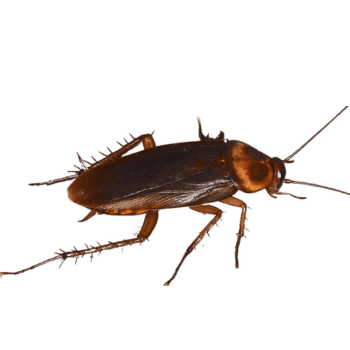
American Cockroach
The American cockroach thrives in warm environments and is often found in urban settings, favoring areas like basements, heating ducts, and sewers. It can reach sizes of 1 to 1.75 inches long, is brown with light markings, and prefers to hide in cracks and soft wood or moist debris where it can lay eggs
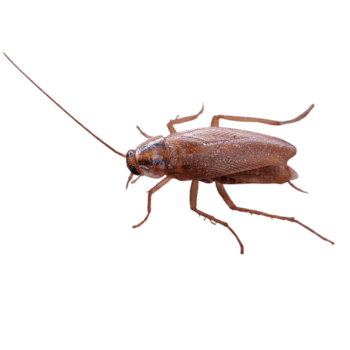
German Cockroach
The German cockroach, measuring about ½ inch in length, is brown with two distinctive stripes running along its thorax. This species is predominantly found in human habitats such as homes, apartments, supermarkets, and restaurants, favoring kitchens and bathrooms for their moist conditions. It is known to be reliant on human environments and is not typically found in the wild
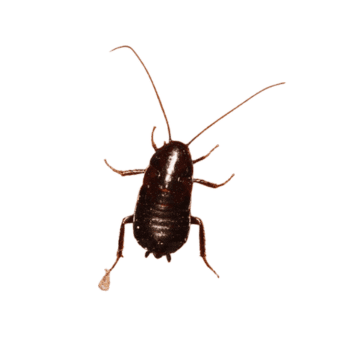
Oriental Cockroach
The Oriental cockroach is dark reddish-brown to black and about one inch long. Preferring shady and damp environments, it commonly inhabits basements, cellars, and crawlspaces, demonstrating slower movement but the ability to climb up surfaces like water pipes and air ducts
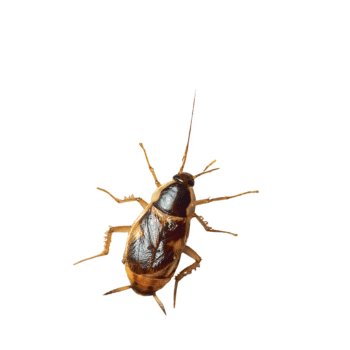
Brownbanded Cockroach
The brownbanded cockroach (Supella longipalpa) is about ½ inch long and can be identified by its two light brown or yellowish bands across its body. This species is fully dependent on human habitats, frequently found in various areas of residences, including bedrooms and behind furniture. Its population has been observed to decrease as air conditioning has become more common, as it prefers warmer environments
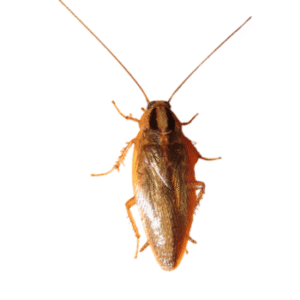
Asian Cockroach
First detected in America in the 1980s, the Asian cockroach closely resembles the German cockroach but prefers outdoor habitats, such as leaf litter or grassy areas. It is an excellent flier and generally avoids entering homes, doing so primarily during dark periods when attracted to indoor lighting
Anatomy and Physiology
General Body Structure
Cockroaches possess a distinct body plan that is divided into three main regions: the head, thorax, and abdomen. The external structure of a cockroach is characterized by a tough exoskeleton that contains calcium carbonate, providing protection for the inner organs and serving as a point of attachment for muscles. The body is segmented, with the thorax comprised of three segments and the abdomen consisting of ten segments.
Legs and Locomotion
Each cockroach has three pairs of sturdy legs attached to the thoracic segments, each equipped with large coxae and five claws. The front legs are typically shorter than the hind legs, which are longer and provide significant propulsive power during movement. The presence of spines on the legs, previously thought to serve only sensory functions, has been shown to aid in locomotion across various terrains, enhancing the cockroach’s ability to navigate difficult surfaces.
Respiratory System
Cockroaches breathe through a series of spiracles located on the abdomen, with each segment possessing a pair of spiracles for respiration
Reproductive Anatomy
The male cockroach has a specialized reproductive structure called an aedeagus, which allows for the secretion of sperm during copulation. Females possess a spermatheca for storing sperm and an ovipositor through which they lay oothecae, or egg cases.
Wings and Flight
Cockroaches have two pairs of wings, with the forewings, known as tegmina, being tough and protective, while the hind wings are membranous and primarily used for flight. The wings are attached to the second and third thoracic segments and feature branching longitudinal veins, supported by multiple cross-veins, which contribute to their structural integrity during flight.
Sensory Structures
Cockroaches are equipped with advanced sensory structures, including compound eyes that provide a wide field of vision and sensitive antennae that are critical for detecting chemicals and navigating their environment. The antennae play a crucial role in tactile and olfactory sensing, allowing cockroaches to interact effectively with their surroundings.
Behavior
Cockroaches exhibit a range of complex behaviors that are influenced by their social structures, environmental conditions, and individual personalities. Their behavior can be categorized into several key areas including social interactions, foraging habits, reproductive strategies, and communication methods.
Social Interactions
Cockroaches, particularly species such as the German and American cockroaches, display elaborate social structures characterized by shared shelters and high levels of social dependence. These insects often live in groups where overlapping generations coexist, and they utilize chemical signaling to communicate and organize social interactions within their colonies. Research has shown that the social biology of domiciliary cockroaches includes features like central place foraging and social information transfer, which enhance their survival strategies in urban environments. Isolated cockroaches exhibit different behaviors compared to those raised in groups. For instance, studies have demonstrated that German cockroaches reared in isolation are less likely to explore their surroundings, interact with conspecifics, and recognize mating opportunities, suggesting the influence of social learning on their behavior.
Foraging Habits
As omnivores, cockroaches display remarkable adaptability in their feeding behaviors. They consume a wide variety of food sources, ranging from starchy foods and meats to decaying organic matter
Reproductive Strategies
Cockroaches employ rapid reproductive strategies to ensure population growth. A single female can produce between 300 to 400 offspring by laying eggs in protective capsules known as oothecae, which serve to increase the survival rate of the young
Communication Methods
Cockroaches utilize various methods to communicate, including sound production. For example, researchers have identified at least four distinct hisses that serve different purposes, such as establishing territory or signaling alarm. The complexity of these communication methods reflects the social dynamics within cockroach groups and contributes to their collective decision-making processes. Notably, group personality does not merely represent a sum of individual choices but incorporates elements of conformity and collaborative decision-making among group members.
Habitat
Cockroaches are highly adaptable insects that thrive in a variety of environments, demonstrating different habitat preferences based on species. Generally, they are attracted to warm, moist areas where food and water are readily available.
General Habitat Preferences
Different species of cockroaches exhibit distinct habitat preferences. For instance, the American cockroach (Periplaneta americana) is typically found in commercial structures and prefers warm, moist areas such as basements, heating ducts, and sewers, foraging primarily on the first floors of buildings. In contrast, the German cockroach (Blattella germanica) is often found in and around homes, especially in kitchens and bathrooms where there is daily access to water. Similarly, the Oriental cockroach (Blatta orientalis), also known as the “black beetle,” is attracted to damp and dark spaces like basements and crawlspaces, often found in shady, wet areas.
Cockroaches in Culture
Cockroaches have a long-standing relationship with human societies, often serving as symbols of resilience and adaptability, albeit in a predominantly negative context. Their presence in urban environments has led to their depiction as dirty pests in Western culture, frequently associated with uncleanliness and disease. Historical accounts, such as those by Pehr Osbeck in the 18th century, document the frequent sightings of cockroaches in bakeries, reinforcing their image as unwelcome intruders in human food sources
Symbolism and Representations
In popular culture, cockroaches are often utilized as metaphors for survival and endurance due to their hardiness and ability to thrive in various environments. This has led to their representation in literature, films, and art as creatures that embody fear, disgust, and the darker aspects of urban life
Cockroaches in Science and Research
Cockroaches have also been subjects in scientific studies, particularly in neurobiology and behavioral ecology, where they serve as models due to their simple rearing requirements and distinct behaviors. Research indicates that cockroaches possess complex social behaviors, challenging the stereotype of them as mere pests. Their involvement in scientific exploration extends beyond the laboratory; for instance, a cockroach named Nadezhda was sent into space, symbolizing both scientific curiosity and the intersection of nature and technology.
Cultural Perceptions Across the Globe
Different cultures have varied perceptions of cockroaches. In some cultures, they are viewed solely as pests, while in others, they are associated with medicinal properties or resilience. For example, in certain traditional practices, cockroaches have been used in folk remedies, indicating a more nuanced relationship with these insects in some societies. This divergence highlights the complexity of human attitudes toward cockroaches, reflecting broader themes of coexistence and conflict between humans and nature.
Health Implications
Cockroaches are more than just household nuisances; they pose significant health risks that can adversely affect human well-being. Their presence in homes can lead to unsanitary conditions and is associated with various health threats, particularly respiratory issues and allergies.
Disease Transmission
Beyond respiratory issues, cockroaches are recognized vectors for various pathogens. They can contaminate food and surfaces with harmful bacteria, including coliform, salmonella, staphylococcus, and streptococcus. By crawling through unsanitary environments such as garbage and sewers, cockroaches can transfer these pathogens to kitchen countertops and food products, leading to food poisoning and other gastrointestinal illnesses.
. The fecal matter of cockroaches can also spread bacteria, increasing the risk of diseases among residents in infested homes
Allergens and Respiratory Health
Cockroaches are known carriers of allergens that can trigger allergic reactions and exacerbate asthma symptoms, especially in sensitive individuals, such as children.
. Their feces, saliva, and body parts contain particles that can become airborne and inhaled, contributing to respiratory problems. Studies have indicated that about 28% of allergic patients test positive for cockroach allergens, in contrast to only 7.5% of non-allergic individuals, highlighting their impact on those with pre-existing allergies
. In urban environments, where cockroach infestations are more prevalent, the risk of developing asthma is notably higher. Research suggests that cockroaches may contribute to increased asthma rates, particularly among individuals living in inner-city areas.
. Furthermore, approximately three million Canadians suffer from asthma, with cockroach allergens being a significant contributing factor to this condition
Psychological and Social Impacts
The presence of cockroaches in residential or commercial properties can lead to significant psychological distress for inhabitants, including anxiety and fear related to health implications. Such infestations may diminish a household’s reputation, decrease customer satisfaction in businesses, and could even result in closure by health authorities due to health code violations.
. The stigma attached to cockroach infestations can impact social interactions and lead to social isolation for affected individuals and families.
Cockroach Control and Management
Controlling cockroaches is a multifaceted challenge due to their resilient nature and adaptability to various environments. Traditional methods, such as over-the-counter sprays, may often fall short against these pests, especially as many cockroach populations develop resistance to common insecticides. Therefore, effective cockroach management involves a comprehensive approach that combines chemical treatments with preventive measures.
Preventive Measures
Effective cockroach control necessitates more than extermination; it requires a holistic strategy. Preventive measures play a crucial role in minimizing the risk of infestation.
- Proper food storage, using airtight containers to prevent access.
- Regular cleaning to eliminate food residues and potential hiding spots.
- Sealing entry points to reduce access to indoor environments.
- Public education on cockroach biology and behavior to empower residents and business owners to take proactive steps
Community Involvement
In multi-family units, collaboration among residents, management staff, and pest control companies is vital for effective cockroach management. Residents are encouraged to maintain sanitary conditions, report infestations, and regularly clean their spaces. Management staff should address maintenance issues, such as fixing water leaks, which can provide essential resources for cockroaches. By eliminating food, water, and hiding places, infestations can be significantly reduced.
Monitoring and Identification
Monitoring the presence and distribution of cockroaches is the first step in any management program. Visual inspections are a straightforward method to identify potential infestations. Key areas for inspection include kitchens, bathrooms, and locations near food and water sources, using a flashlight to aid in the search. For more thorough monitoring, several tools can be employed:
- Jar traps: A simple method involving a baby food jar with a greased upper portion to trap cockroaches attracted to bait placed inside.
- Glue board traps: Strategically placed in areas where cockroaches are likely to frequent, such as kitchen cabinets and near garbage cans, these traps help assess infestation levels.
Integrated Pest Management
An Integrated Pest Management (IPM) approach is recommended to effectively manage cockroach populations.
- Sealing gaps in plumbing and structural elements.
- Reducing ambient moisture through improved ventilation and drainage.
- Conducting routine inspections and applying treatments as necessar
- . Furthermore, educating residents on proper sanitation practices is essential for interrupting the cockroach lifecycle and aiding in do-it-yourself control efforts
Chemical Control Methods
Chemical treatments may include traditional insecticides and Insect Growth Regulators (IGRs), which disrupt the growth and reproductive cycles of cockroaches. Unlike conventional insecticides, IGRs prevent pests from reaching maturity and thereby reduce population growth over time

